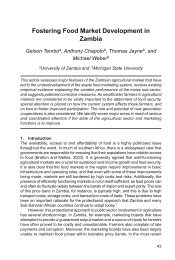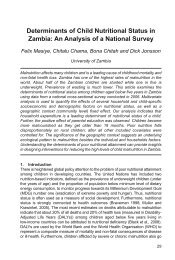Introduction to Basic Legal Citation - access-to-law home
Introduction to Basic Legal Citation - access-to-law home
Introduction to Basic Legal Citation - access-to-law home
Create successful ePaper yourself
Turn your PDF publications into a flip-book with our unique Google optimized e-Paper software.
ecommended. The word "but" is omitted from the signal when it follows<br />
another negative signal «e.g.».<br />
(d) Signals that indicate background material.<br />
• See generally<br />
o Authority presents useful background. Parenthetical explanations of the source<br />
materials' relevance are encouraged «e.g.».<br />
(e) Combining a signal with "e.g."<br />
• E.g.,<br />
o In addition <strong>to</strong> the cited authority, there are numerous others that state, support,<br />
or contradict the proposition (with the other signal indicating which) but<br />
citation <strong>to</strong> them would not be helpful or necessary. The preceding signal is<br />
separated from "e.g." by a comma «e.g.».<br />
§ 6-400. Order<br />
[BB|ALWD] Contents | Index | Help | < | ><br />
Sometimes multiple citations or "strings" are necessary.<br />
Principle 1: When a series of citations includes material grouped after more than one signal,<br />
the signals should appear in the order in which they are listed in § 6-300.<br />
Principle 2: Section 6-300 breaks signals (and their references) in<strong>to</strong> four different "types": (a)<br />
supportive; (b) comparative; (c) contradic<strong>to</strong>ry; and (d) background. Signals of the same type<br />
must be strung <strong>to</strong>gether within a single citation sentence and separated by semicolons.<br />
According <strong>to</strong> The Bluebook signals of different types should be grouped in different citation<br />
sentences. In other words, a period should end the string of authorities indicating support, and<br />
any authorities in contradiction, preceded by the appropriate signal, should follow in a<br />
separate citation sentence. The ALWD <strong>Citation</strong> Manual allows all <strong>to</strong> be contained in a single<br />
sentence with only a semicolon separating the four different categories and their signals.<br />
Principle 3: When more than one citation is preceded by the same signal, the citations are<br />
grouped by type in the following order:<br />
• constitutions (U.S. first, followed by states in alphabetical order*)<br />
• statutes (U.S. first, followed by states in alphabetical order*)<br />
• cases (U.S. first, followed by states in alphabetical order* and grouped within each<br />
jurisdiction by court in descending order, with decisions of a single court** arranged<br />
chronologically, most recent first)<br />
• regulations (U.S. first, followed by states in alphabetical order*)<br />
• books (arranged alphabetically by last name of author)<br />
• journal articles (arranged alphabetically by last name of author)<br />
* If the writing concerns the <strong>law</strong> of a particular state, citations <strong>to</strong> the constitution, statutes,<br />
cases, and regulations of that state should, however, precede the rest.<br />
136




